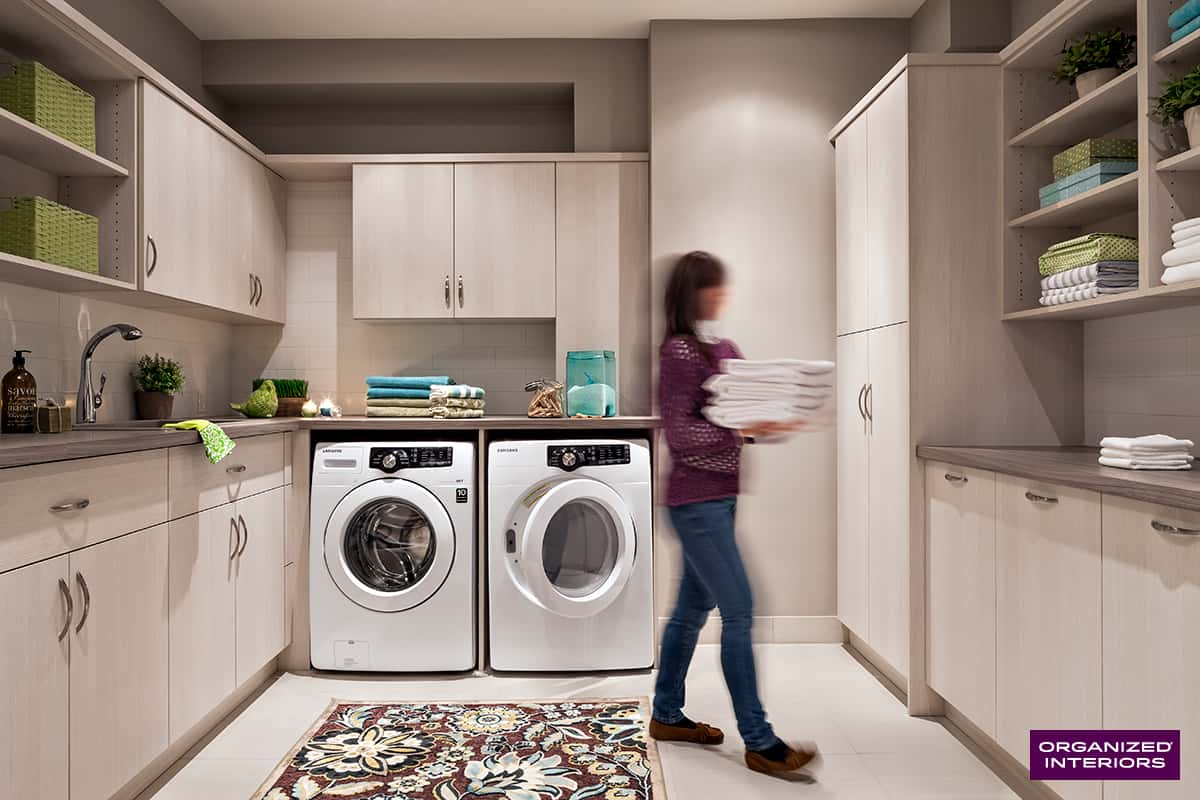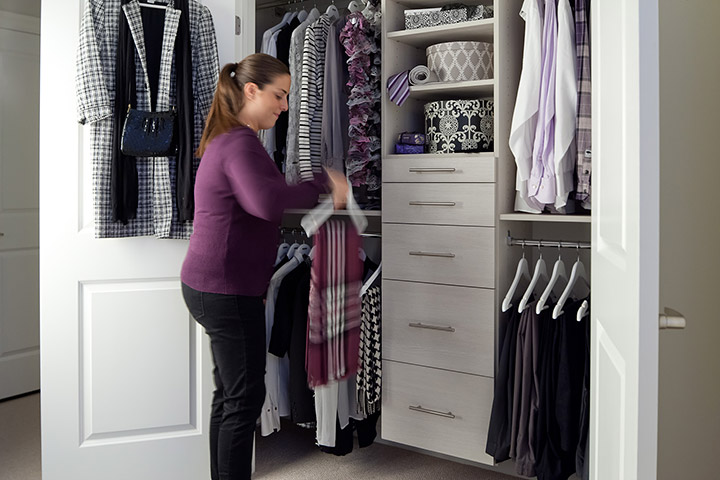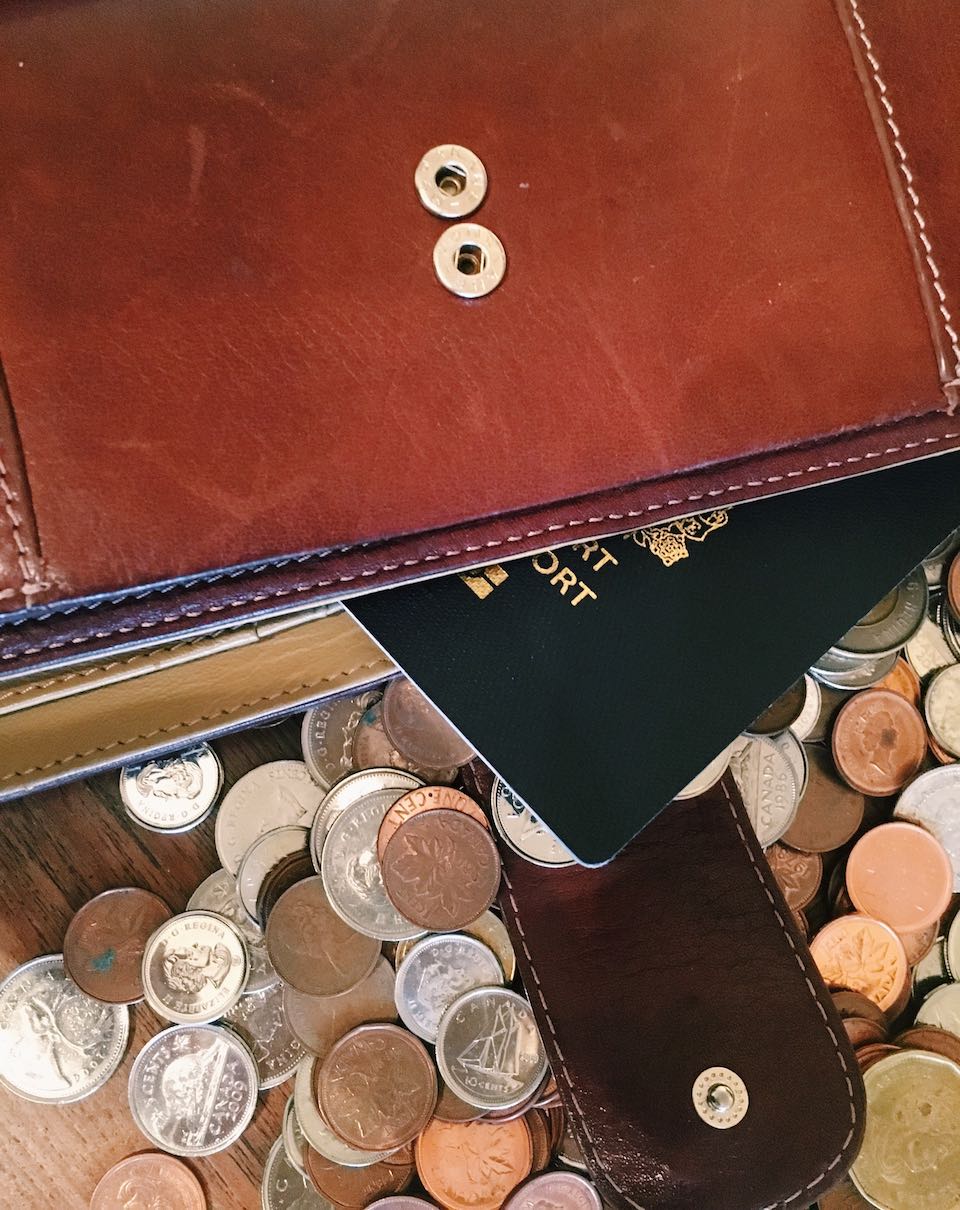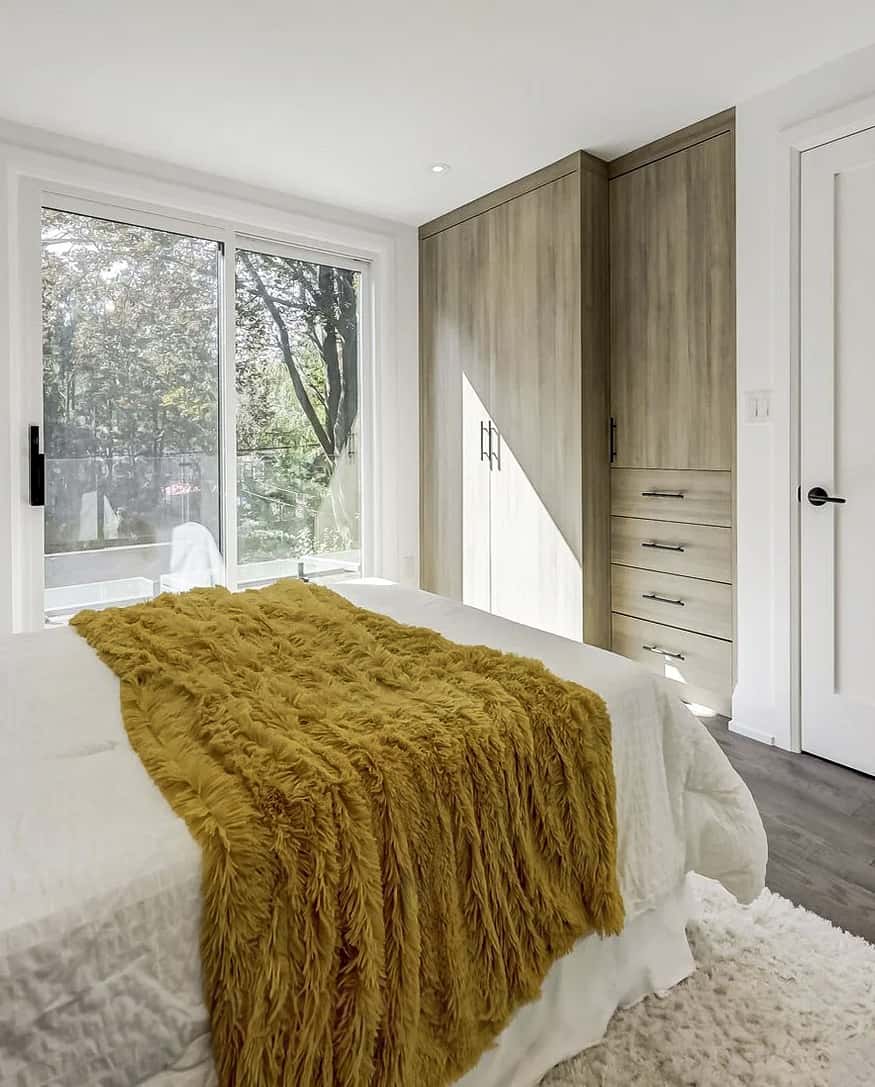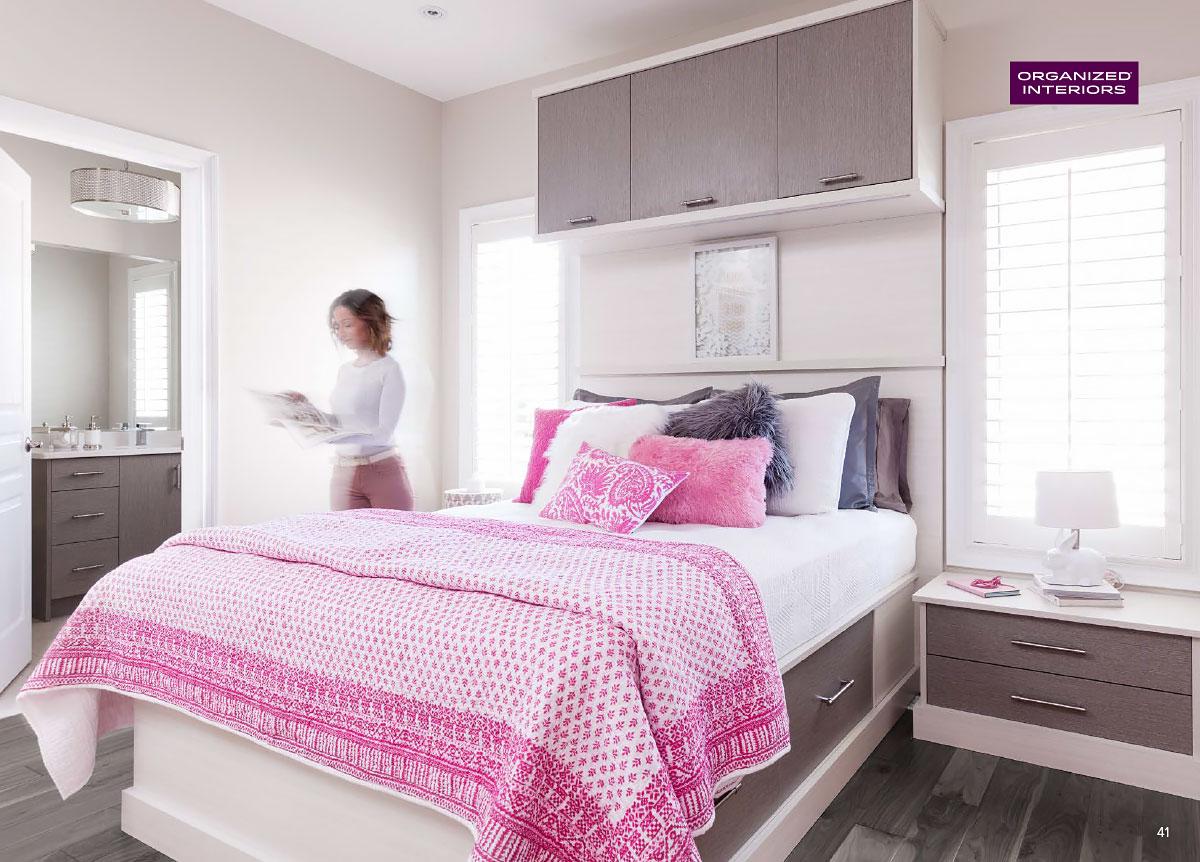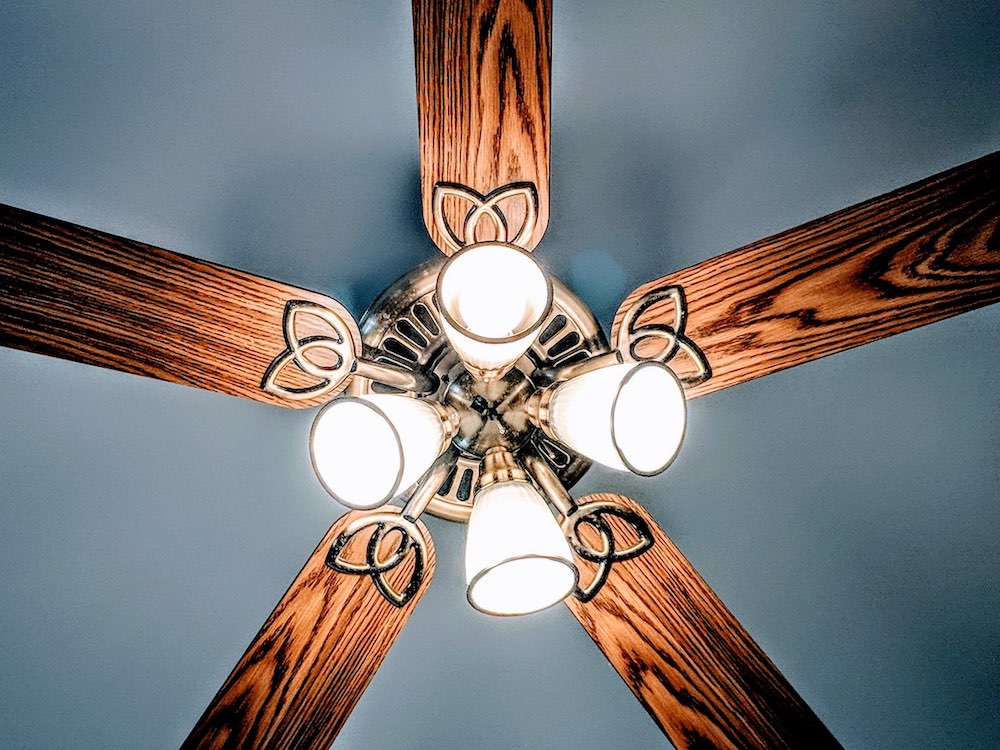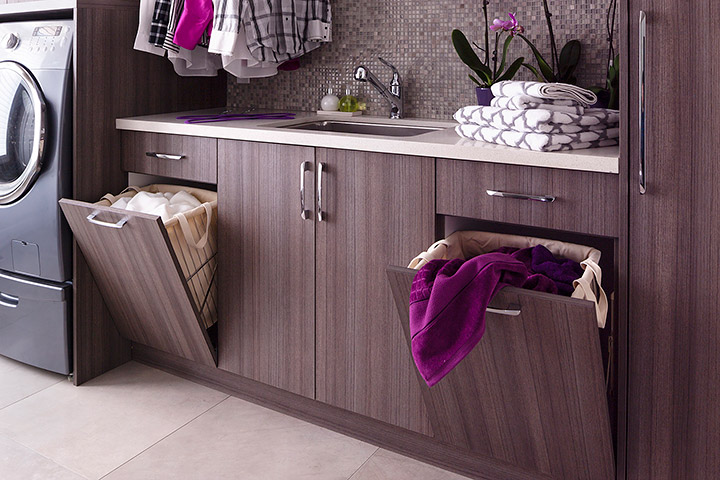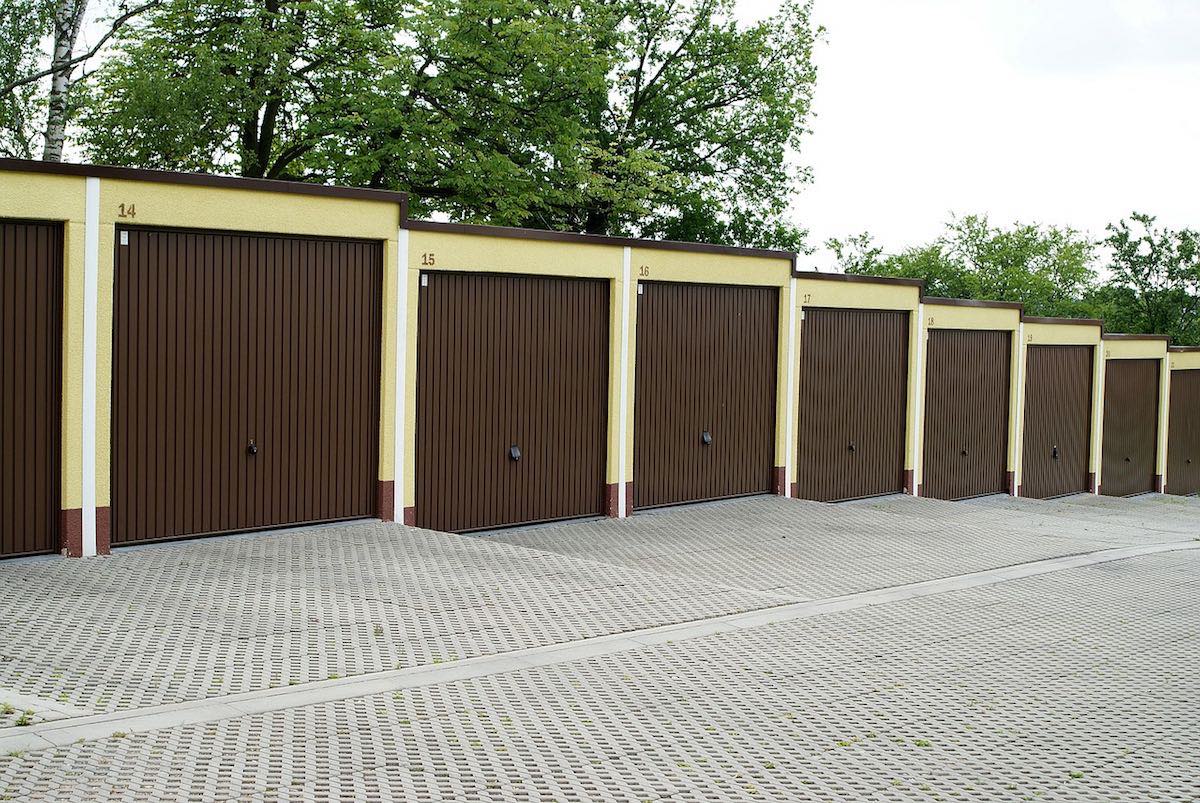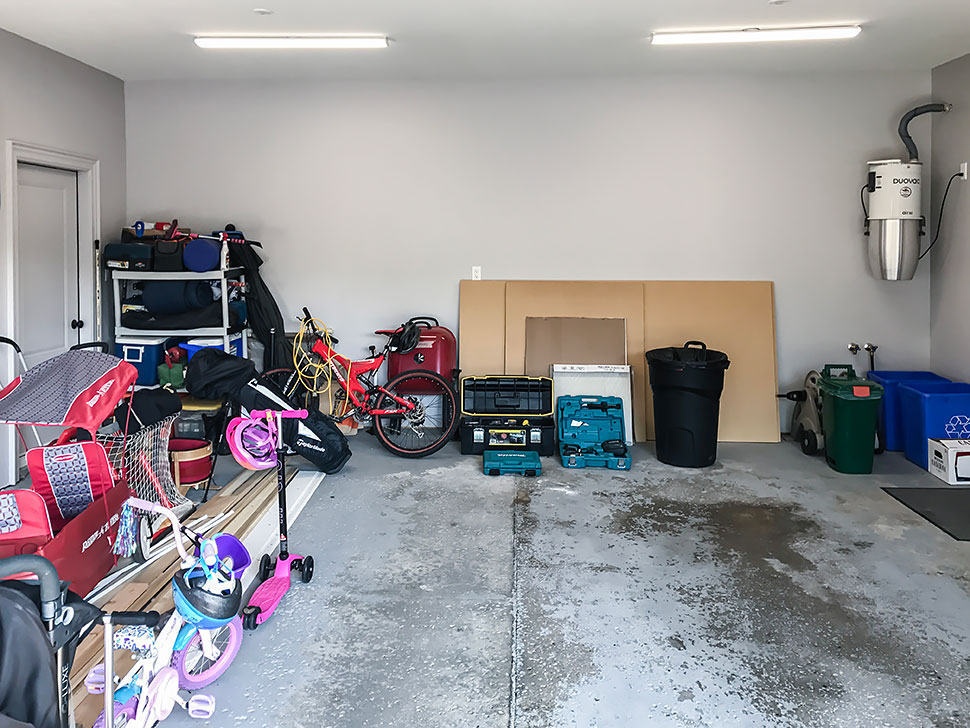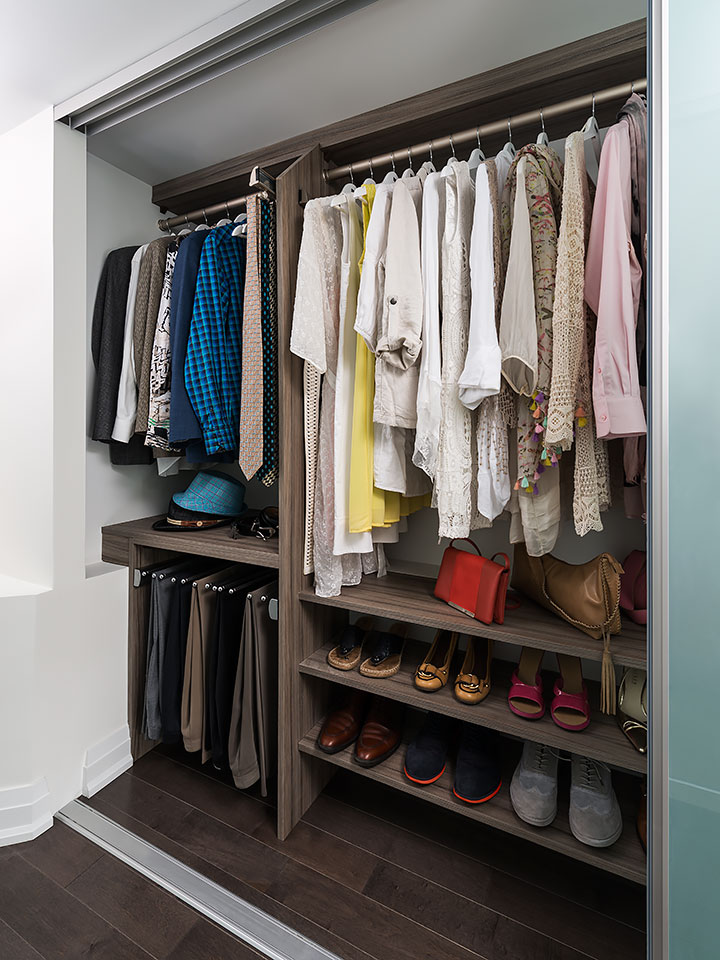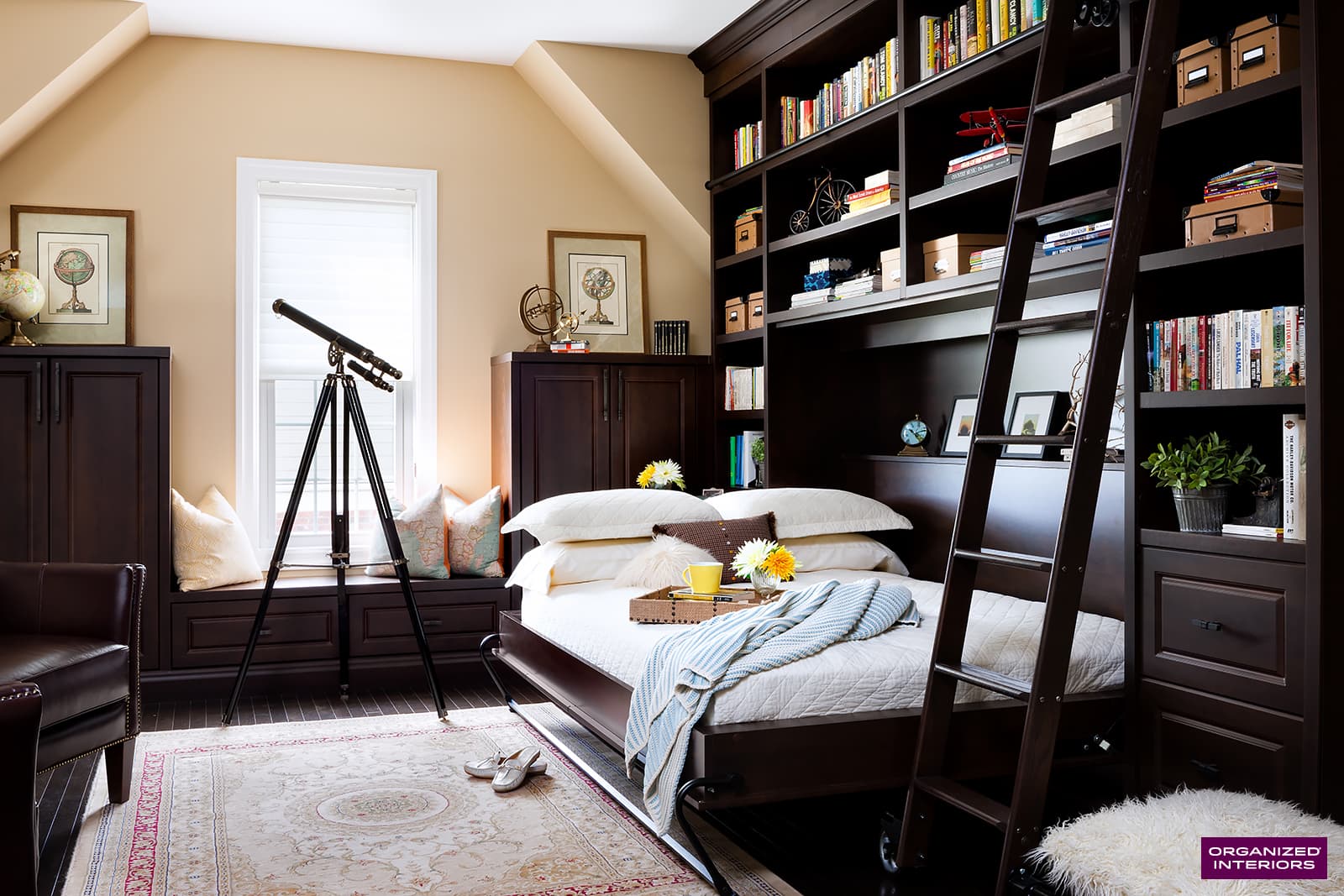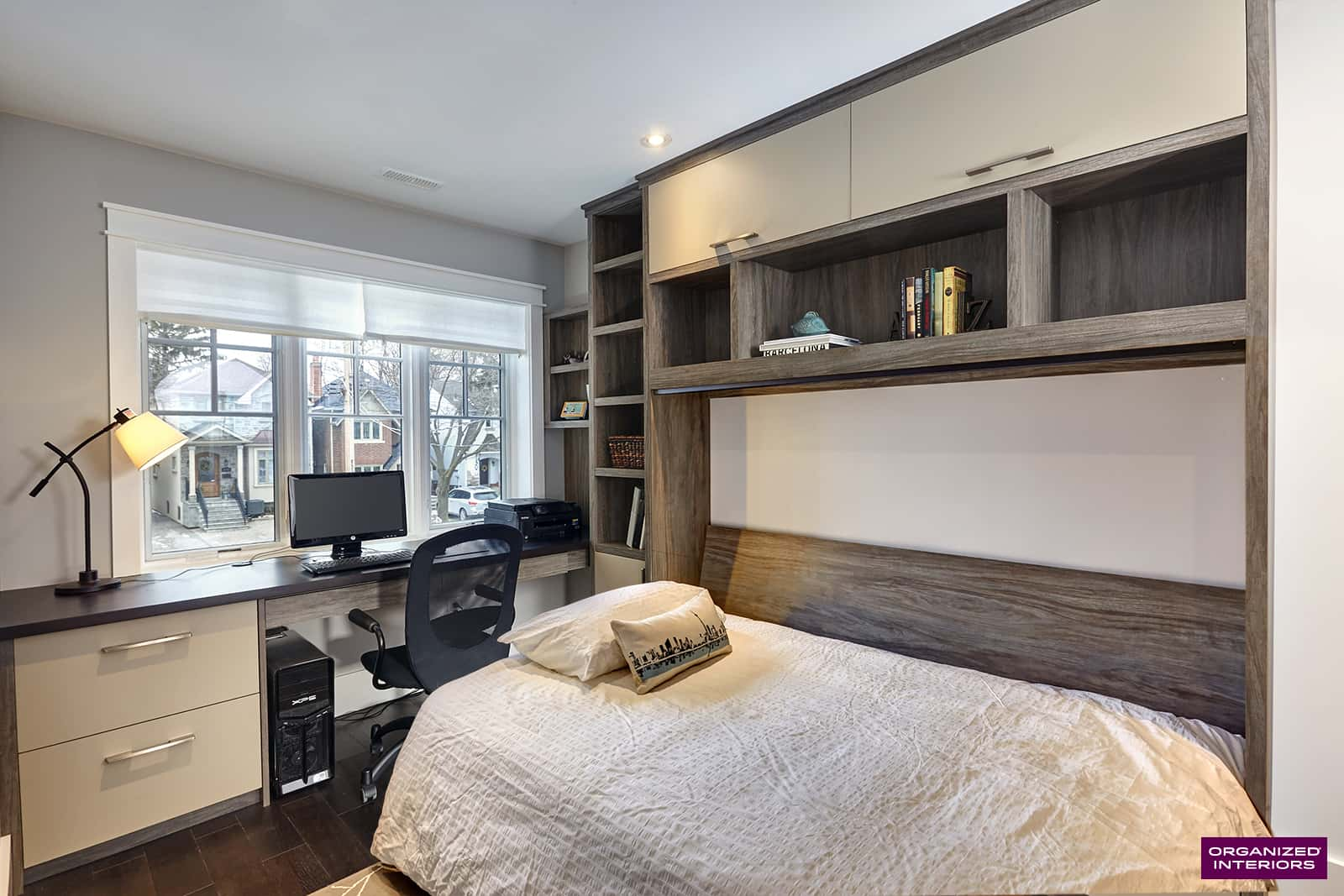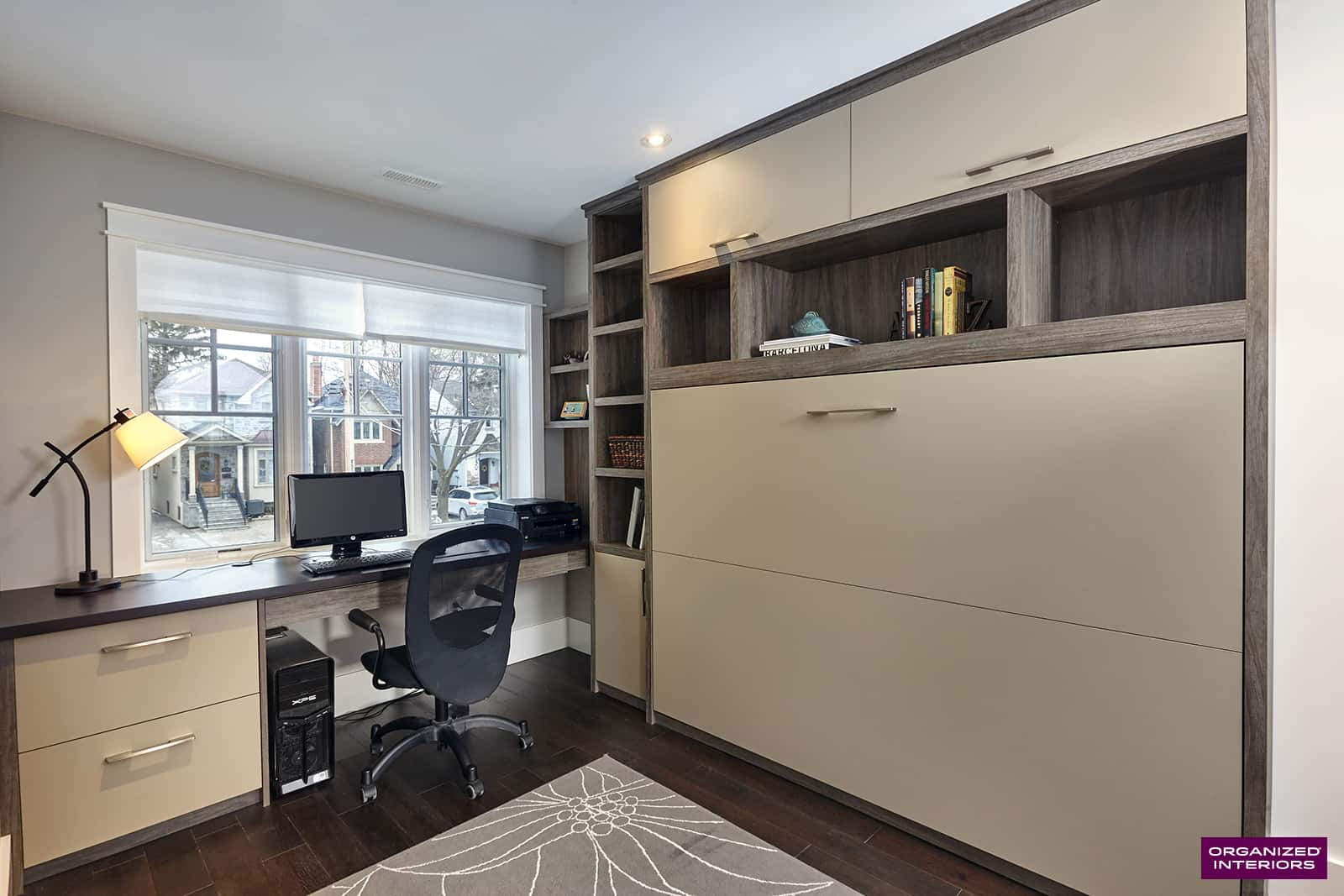When we talk about the practice of washing and drying our clothes, most people refer to it as “doing the laundry”, being on “laundry duty”, or taking care of your “laundry chores”.
None of those descriptions exactly demonstrate a very enthusiastic attitude towards doing the laundry once or twice a week, do they?
While tackling any home chore is a necessity and not exactly the ideal way you’d prefer to be spending your free time, various common laundry room problems can make you really want to put off your laundry tasks for as long as possible.
We’re not talking about laundry problems like how to get your clothes whiter, softer, less staticky, or whether or not you’re using too much detergent.
No, we’re talking about common laundry room problems that make this space:
- dreary and unwelcoming
- functionally inadequate
- prone to storage and clutter issues
- a safety concern for parents
Things don’t have to be this way when it comes to your laundry room, however.
Do these laundry room problems affect you?
Although the laundry room has traditionally been overlooked as an area that’s home improvement project-worthy, homeowners have started to change their attitude about it in recent years.
Laundry rooms in many houses are being transformed into spaces that, in some cases, are downright swanky. A laundry room remodel enables this part of your home to complement the existing décor of your living space.
According to a National Association of Home Builders’ 2019 report, the laundry room was named as the most essential home feature for homebuyers.
It only makes sense that an increasing number of homeowners are coming around to the realization that it’s time to pay more attention to how their laundry rooms look and function.
After all, we spend a lot of time in the laundry room. The average American family does about eight loads of laundry per week. That can add up to a few hundred hours being spent in the laundry room annually for some families.
If you’re vexed by any of the common laundry room problems listed here, find out what solutions work best in order to make your laundry room easier to use and more comfortable to spend time in.
1. Your laundry room is dreary
Perhaps the biggest reason we procrastinate on laundry chores is due to the fact that most laundry rooms are dark, dreary spaces that lack any type of appealing décor.
Homeowners would probably describe their laundry room as something that’s utilitarian, which Merriam Webster defines as something that’s “made to be useful rather than to be decorative or comfortable”.
Despite this widespread perception, Organized Interiors has proven time and time again with our many laundry room makeovers that both functionality and stylish décor can, in fact, work in perfect harmony.
A makeover can add a decorative flair and warmth to a laundry room with:
- beautiful custom cabinetry and countertop finishes
- decorative cabinetry hardware
- a fresh coat of wall and ceiling paint
- backsplash tiles to add more aesthetic appeal to the room
- a colour scheme that blends nicely with your home’s décor
- laundry tub and faucet upgrades
Adding finishing touches to a laundry room remodel with improved lighting, artwork, a stylish rug, or plants (if the room gets natural light), will also liven up the space and make it more inviting and pleasant to spend time in.
2. There isn’t enough laundry room storage space
One of the most common laundry room problems is having insufficient storage space for your laundry supplies.
All of those detergent, stain remover, fabric softener, bleach, and spray starch containers can get disorganized without an adequate storage and organization system.
Then there’s all of the additional laundry helpers we use, such as laundry boosters, dryer sheets, clothes pins, laundry pods, and ironing supplies.
So what’s the best solution to store everything tidily? Have your room remodelled to include enough custom cabinetry to hold everything you use for your laundry chores (and then some).
Custom cabinets look much nicer than DIY shelving, repurposed kitchen cupboards, or prefab big box store cabinetry. Customizing also allows you to create a design aesthetic that aligns with your style tastes and home décor.
They’ll also maximize your laundry room’s storage space and allow you to adjust shelving in order to fit the different sizes of laundry supplies that need storing.
Open shelving and pullout shelves can also be used to accommodate all of your laundry room storage needs.
You can even squeeze a little more storage space out of your laundry room by using pedestals with drawer storage for your washer and dryer.
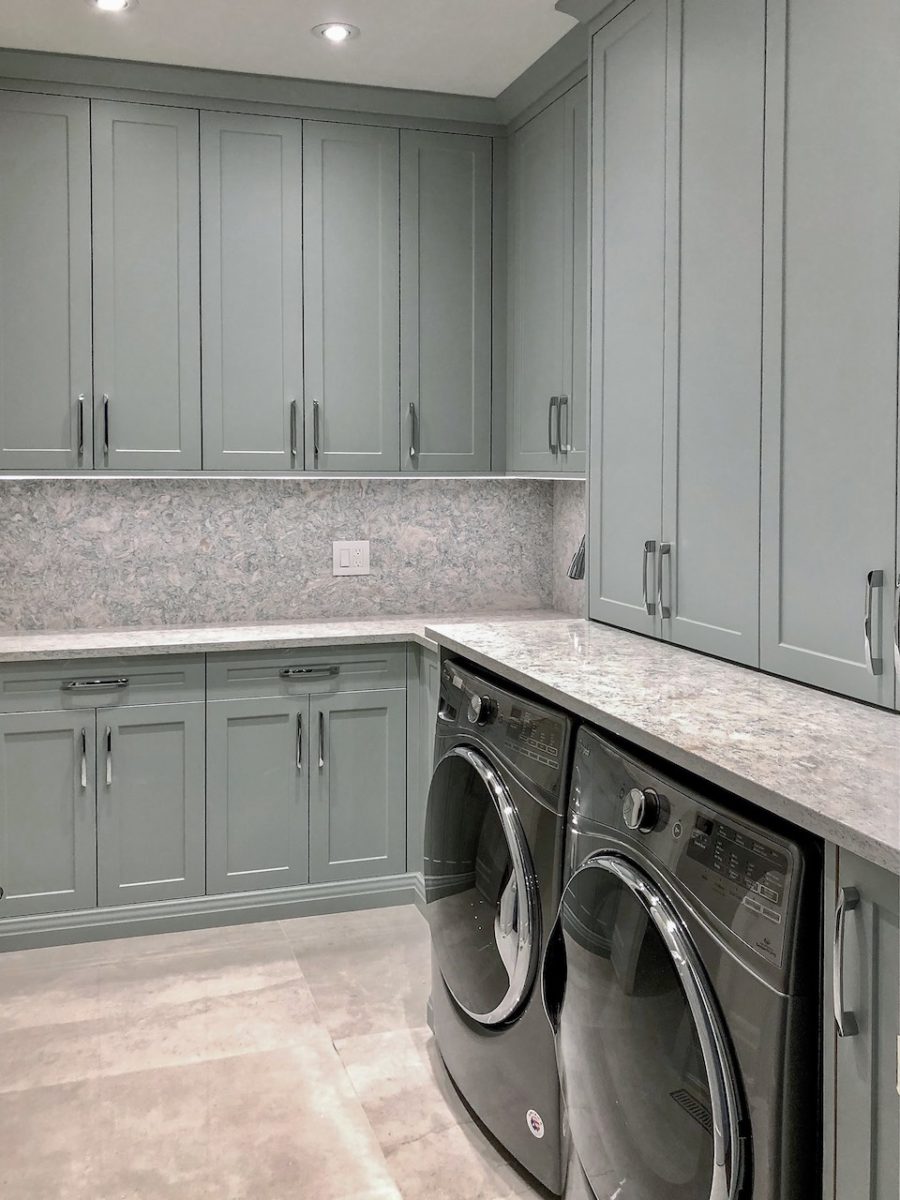
Having plenty of cabinets in the laundry room eliminates storage issues. Attractive countertops and cabinet finishes add a decorative flair to a typically dreary home space.
3. The laundry room is too small
Another common issue with laundry rooms is their small size, particularly in older homes. Smaller laundry rooms can make it more difficult to get your laundry duties done in a timely manner.
Here’s a couple of examples: a small laundry room doesn’t have an adequate amount of space for a folding area, necessitating you to move your freshly dried clothes to another room for folding.
Perhaps the laundry room is so cramped that even sorting clothes before washing or after drying them is a headache, which also requires you to do this elsewhere.
While a smaller laundry room does present more of a challenge when it comes to your laundry task efficiency, there are ways to get the most out of your limited space.
Leveraging the expertise of a professional who can add smartly located storage and extra features for an optimal level of functionality will improve your experience using a small laundry room.
Stackable washers and dryers can also be used to save space.
4. Keeping children out of the laundry room is a challenge
If you have young kids, getting them involved in supervised laundry tasks is a great way to teach them responsibility and the pride that comes with contributing to the household chores.
The American Cleaning Institute represents the U.S. cleaning products industry and released stats related to children and laundry:
- 50% of parents do their laundry while their kids are also in the laundry room
- 67% of parents of children under the age of four said their children have laundry room access
- 46% of parents get their children to help them sort and prepare clothes for the wash
If the laundry room isn’t being used or if it is and an adult isn’t present, keeping them out of the room can be a concern for parents due to the various potential safety risks that exist.
Children love getting into small spaces, which makes washers, dryers, pullout laundry hampers, and cupboards dangerous to your little ones.
If necessary, purchase locks for your appliances, especially for more accessible front-loading washers and dryers. And naturally, you could just keep the laundry room locked for some extra peace of mind.
Even if you are working in the laundry room with your kids, it’s easy to get distracted with one of your laundry tasks or something else going on in the house. Always stay vigilant when your children are in the laundry room!
5. Laundry supplies are difficult to store safely
 One of the other obvious safety issues with laundry rooms if you have youngsters or pets are the hazardous chemicals in your laundry products.
One of the other obvious safety issues with laundry rooms if you have youngsters or pets are the hazardous chemicals in your laundry products.
Most laundry detergent pods are round and colourful, which curious children may mistake for toys or candy. Keeping them out of sight and out of reach is children is even more important because laundry pods are more toxic than traditional detergents.
Between 2012 and 2017, Global News reports that American poison control centres received almost 73,000 calls related to laundry pod ingestion incidents involving mostly kids under the age of six.
Even if you do put a lock on the laundry room door, it might be wise to keep all your dangerous laundry supplies locked behind your cabinetry doors, ideally higher up. And make sure your kids are taught about the safety risks of your laundry and cleaning products.
It’s advisable to have the number of your local poison control centre easily visible in the laundry room or in your phone. If there is an accident, consult the laundry product label for first aid instructions.
Some people prefer to transfer their laundry products to jars or other storage containers. If you do this, be sure to keep everything labelled and retain the packaging or labels of products being decanted. That way, you’ll have a reference for the product in case there’s an emergency.
6. The laundry room is a dumping ground
Laundry rooms are busy spaces, so keeping them organized and free of clutter isn’t easy.
Between piles of dirty clothes being deposited in the room, clothing items in need of repair, all of your laundry products, and accumulating those miscellaneous items that pulled out of pockets before a wash, things can get untidy fast.
Outfit your laundry room with enough storage and counter space so that everything has a place, which simplifies and expedites your organization efforts.
Built-in hampers are incredibly useful for keeping your laundry room organized. Getting everyone in the family to separate their own dirty clothing into the appropriate hamper will save whoever takes care of most of the laundry tasks lots of time.
Hampers can also be installed in your bedroom custom cabinetry to keep dirty clothes organized. Organized Interiors’ hampers conveniently come with pullout liners with handles for easy transportation.
Use baskets or dedicated cabinet or cubby spaces for all of those small odds and ends that can accumulate in the laundry room, like single socks and forgotten items left in pockets. That will keep surfaces like the top of your washer and dryer, folding counter, and counter space around the sink clutter-free.
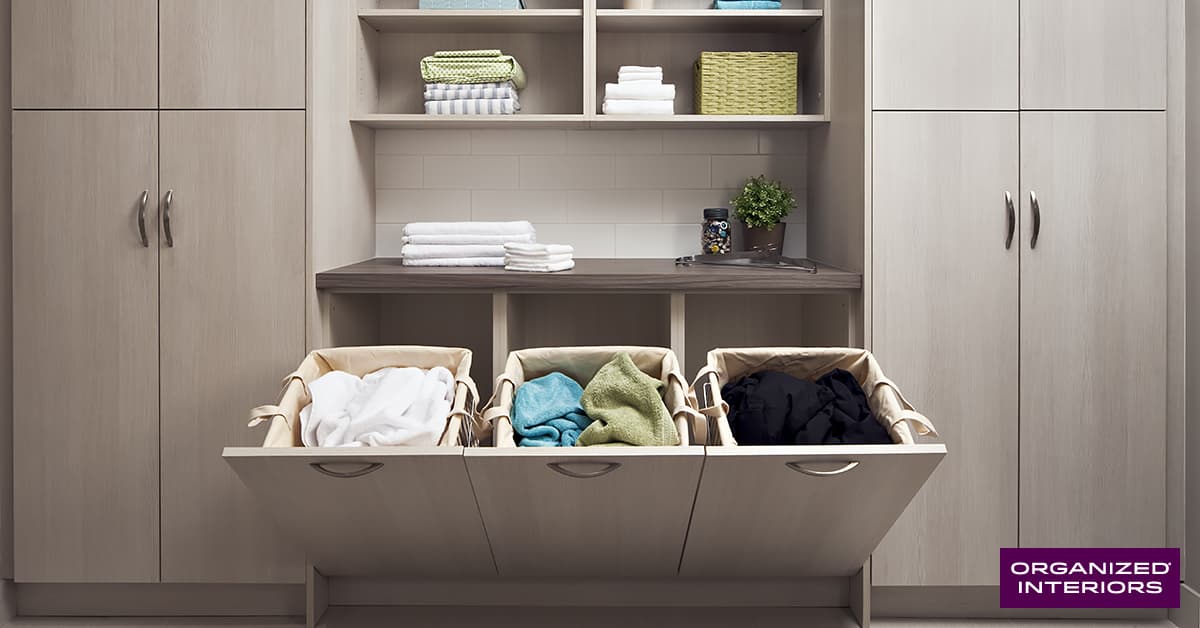
7. Multi-tasking while doing laundry is tricky
There’s a lot of waiting time involved with doing the laundry, so you probably multi-task while the washer and dryer are running.
This can include doing things like cooking, washing the dishes, vacuuming, helping your kids with homework, or supervising young children.
In bigger homes, the laundry room’s location can play a big part in how convenient it is to multi-task while taking care of the laundry.
Moving your laundry room’s location from, say, the basement to a more centralized part of the home to help make this easier for you isn’t usually a simple or inexpensive solution.
Relocating your laundry room to a space close to your existing plumbing which also allows for dryer venting is obviously imperative.
You’ll also need to take the noise a washer and dryer can make while running into account, especially if you’re thinking of relocating close to any bedrooms.
We previously mentioned how much homebuyers value a good laundry room and a well-located laundry room (on a main floor, preferably beside the kitchen) is especially coveted by buyers.
8. The laundry room lacks functionality
If a laundry room merely holds your washer and dryer, allows for a small amount of storage, and has a barely adequate-sized folding and sorting area, this lack of functionality only makes laundry work tougher to do.
In addition to more cabinet storage and built-in laundry hampers, there are other ways to enhance the room’s functionality, such as adding:
- a space-saving pullout ironing board
- undercabinet task lighting
- a dedicated area for sewing and garment repairs
- an island for extra counter space and storage
- hanging rods and valet rods for more hanging space
- a pullout drawer that functions as a drying rack
With the right setup and enough space, a laundry room can double as a go-to home storage space where luggage, seasonal clothing, and cleaning supplies are kept.
If it’s located near an entrance, a laundry room-mudroom combo is another idea to consider. Mudrooms function as a very useful transitional area between the outdoors and the rest of your home. They can help keep your front hallway tidier and cleaner.
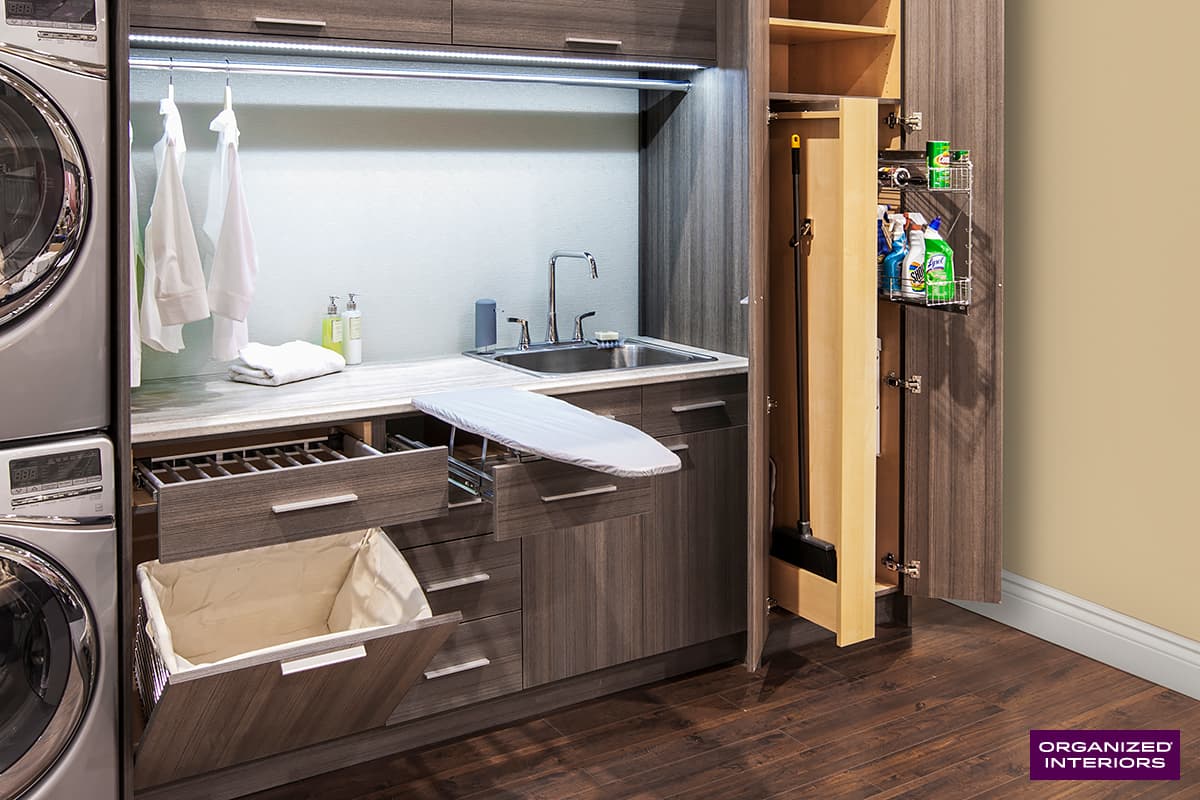
Add extra functionality to a laundry room with hanging rods, task lighting, and space-savers like a pullout ironing board, drying rack, and hampers.
9. The laundry room gets too hot
So you’ve remodelled your laundry room with some of the aforementioned upgrades. While the room is a lot more pleasant to use, you find that it always gets too hot whenever the dryer is running. What’s up with that?
There are several factors that can cause the laundry room to get uncomfortably warm or hot once the dryer is operating.
The first thing to check is your dryer’s lint screen, which should be cleaned after every use. A clogged lint screen poses a fire hazard, makes the dryer work harder (which creates more heat in a room), can cause clothes to not fully dry, and adds to a laundry room’s humidity level.
Also check the dryer’s vent tube (that white or aluminum-looking flexible tube behind the appliance). Make sure it’s not damaged and properly attached to the dryer and outdoor exhaust vent.
The dryer duct, along with the rest of your home’s ducts, should be periodically cleaned by a professional to ensure no blockages occur.
And finally, check your outdoor lint trap occasionally and eliminate any lint build-up. This is something many people don’t do and it can create a major fire risk if it’s ignored long enough.
Rely on a pro to solve your laundry room problems
If you’re experiencing any of these laundry room problems, don’t just adapt to them. Take action now to improve one of the hardest working rooms in your home.
Organized Interiors can provide solutions to many of the laundry room problems you’re dealing with. All you need to do is to get a dialogue started with us by scheduling a free in-home design consultation.
Please share this post if you found it useful.

